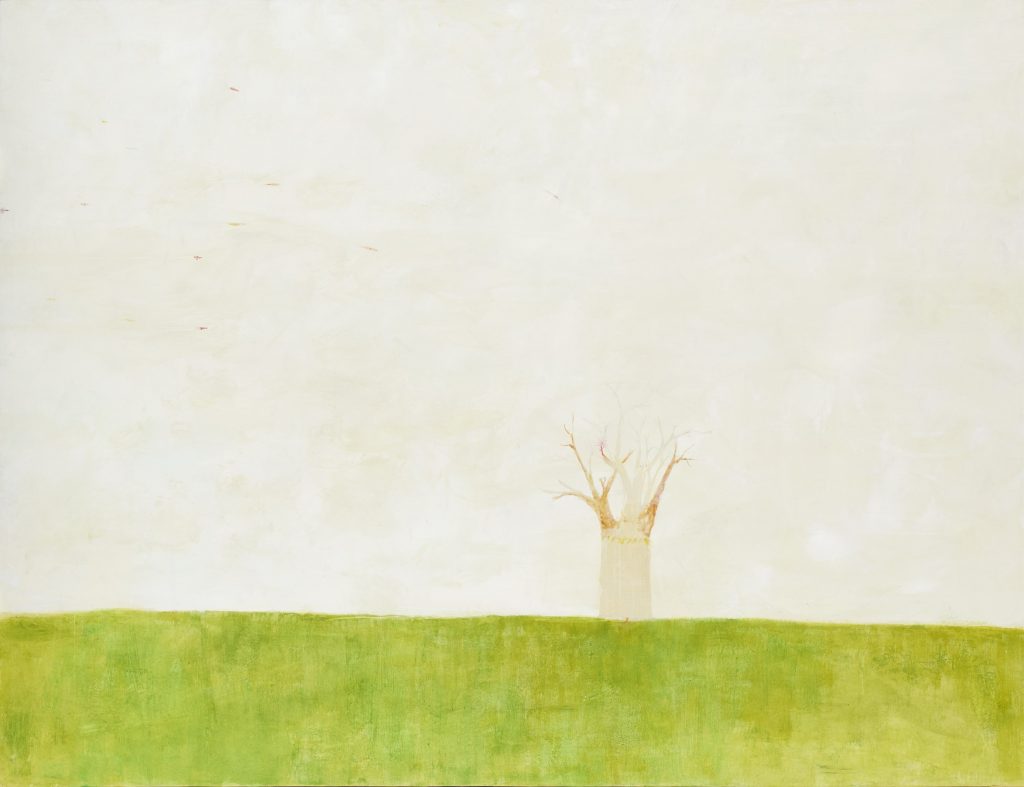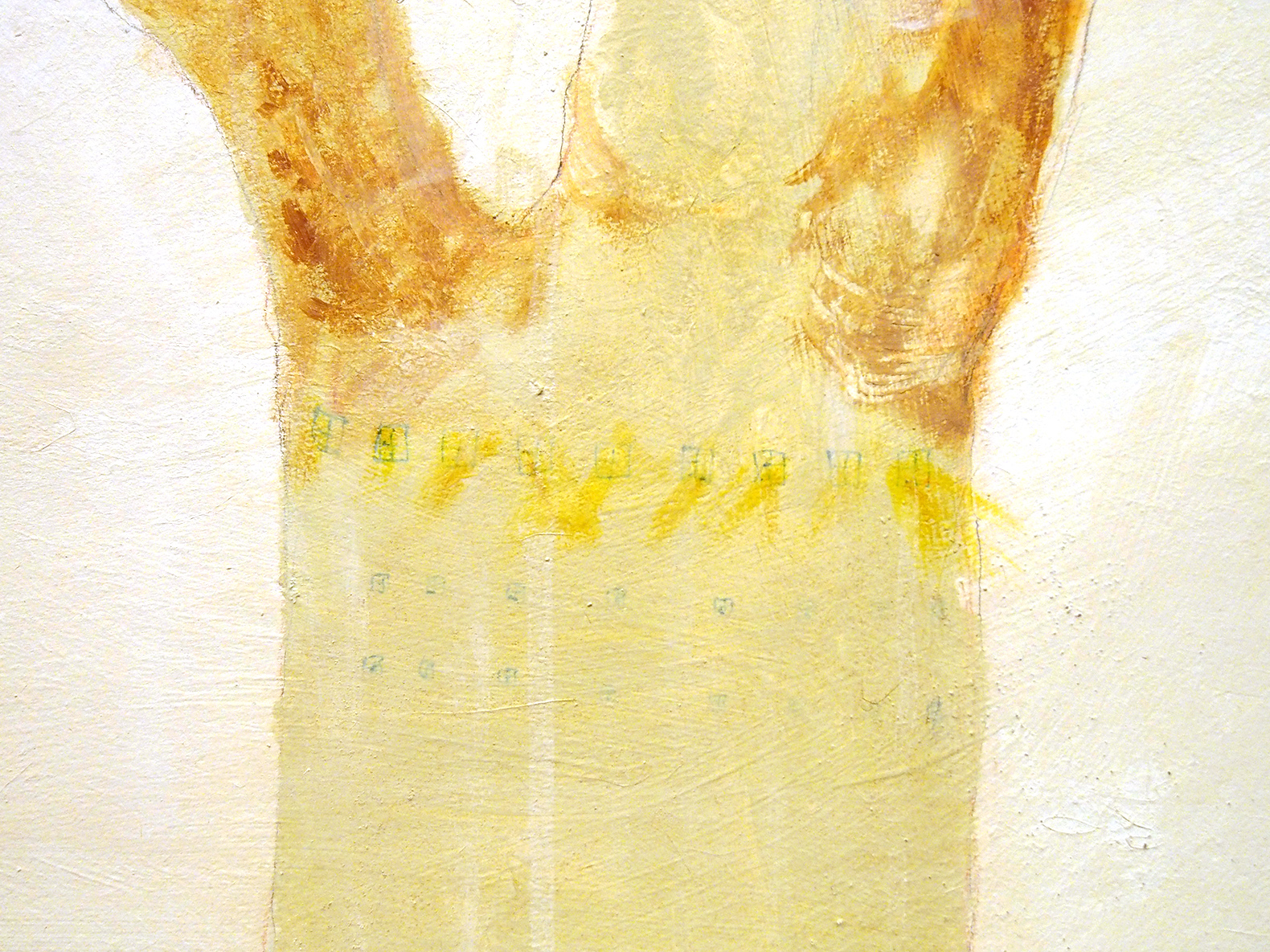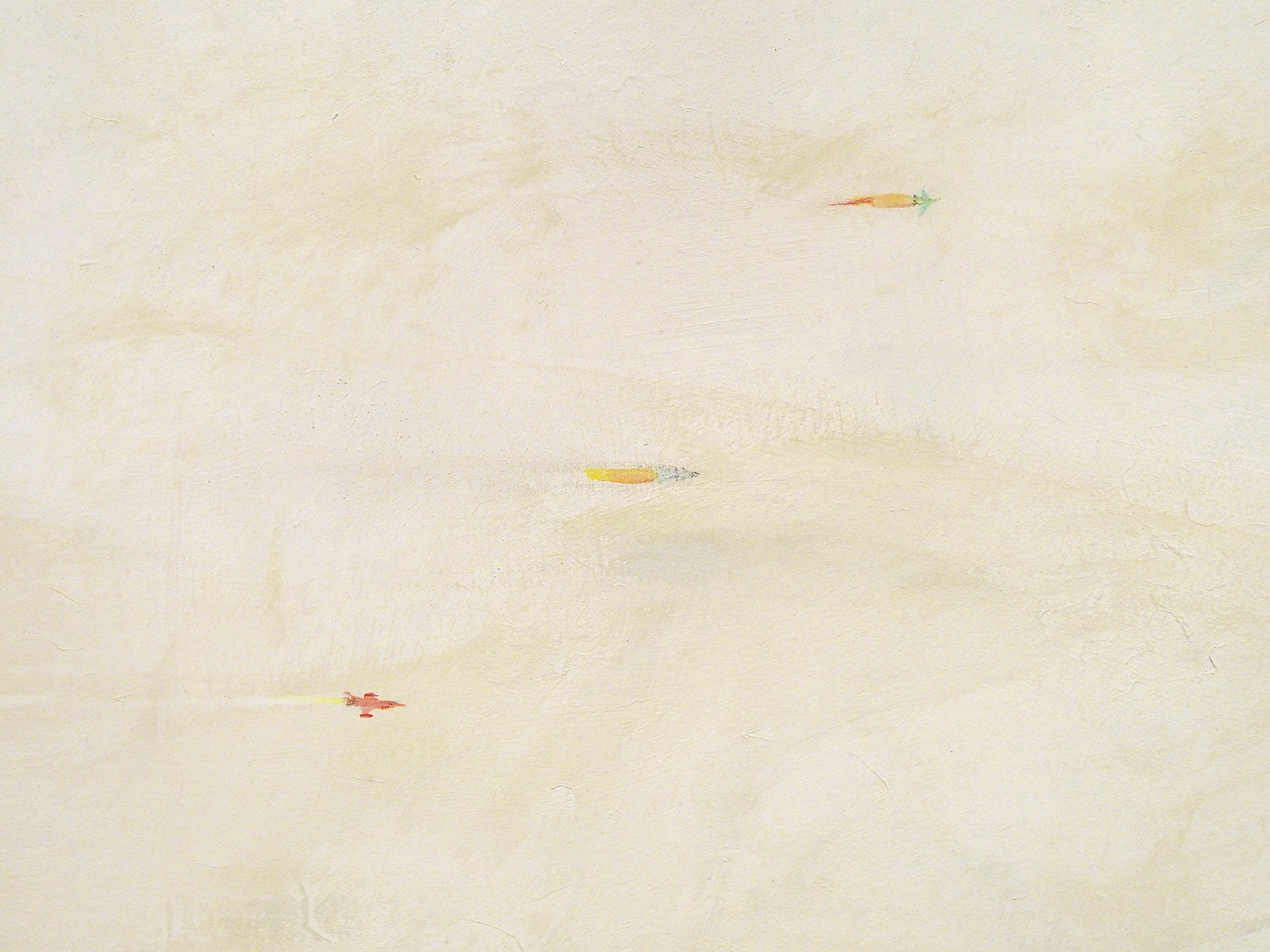Watch, Read, Listen
Recent Additions to the Collection MOMAT Collection Newsletter of the National Museum of Modern Art, Tokyo Sugito Hiroshi, the secret tower , 1998
Back
the secret tower
1998
Acrylic and pigment on paper
176.0 × 230.0cm
Purchased FY2018
©Hiroshi Sugito

©Hiroshi Sugito

©Hiroshi Sugito
A tree stands in a green meadow. Its shape, with branches sprouting out at the top of a thick and massive trunk, recalls a baobab tree. Checking the painting’s title to see if this is correct, the viewer finds only the phrase the secret tower. This English title appears in the Japanese caption as well, and the standard rules of capitalization, which state that it ought to read The Secret Tower, evidently do not apply. The artist, Sugito Hiroshi, explains:
“The first letters of the title are lowercased to give the impression of a fragment plucked out of the middle of a sentence, and so as not to over-emphasize the title (something I was oddly focused on in my younger days). At the time I was making paintings in such a way that their contents could interconnect regardless of order, and at times framing them in curtains, characteristics that resemble kamishibai [traditional storytelling accompanied by pictures, performed in a small theater-like booth].”
(E-mail from Sugito Hiroshi to the author, September 2, 2020).
The word “secret” has a range of nuances: untold, confidential, hidden. The meaning of “tower” is, so to speak, more solid. Indeed, there are small windows like those of a tower near the top of the tree trunk. In other words, the tree seems to have an interior, occupied (one imagines) by people. Judging by the size of the windows, the tree/tower is quite a huge one.
A small fighter plane is headed for the tree/tower. It may be an attempted attack, but judging by the size differential it will be difficult to inflict serious damage on the tree/tower. An attack that must be carried out, even though it is obviously foolhardy… The target is a tree/tower that has somehow grown to colossal size amid grasslands that look like the ends of the earth.
Here one is once again reminded of the type of tree it resembles, a baobab.
The name of this tree, which grows mainly on the African savanna, is unexpectedly well known in Japan because it appears in The Little Prince. In Antoine de Saint-Exupéry’s story, the roots of three baobab trees spread across the Prince’s small planet, and the trees will eventually grow up from these (invisible) roots and cover the world entirely unless he pulls the saplings up as soon as he notices them sprouting, symbolizing powerful and proliferating evil.
Sugito says that he was aware of baobab trees when he produced this painting, and he had read that baobabs in Africa could “communicate” with other baobabs even a considerable distance away (Telephone conversation between Sugito Hiroshi and the author, September 30, 2020).
However, it was not important here to confirm whether the tree depicted is a baobab (it seemed gauche to ask, and I did not do so). Rather, it is notable that this painting, painted in the year of the US Clinton administration’s Operation Desert Fox bombing campaign in Iraq, appears in a new light in our current time, inviting reinterpretation and reaffirming the enduring power of art.
(Gendai no me, Newsletter of The National Museum of Modern Art, Tokyo No. 635)
Release date :


